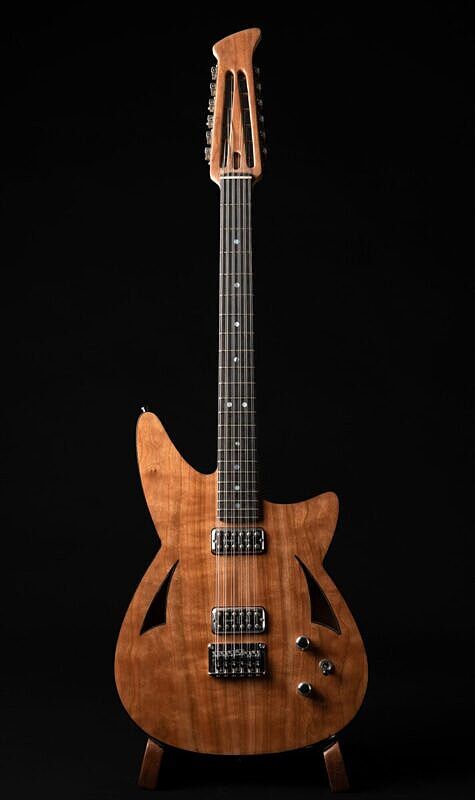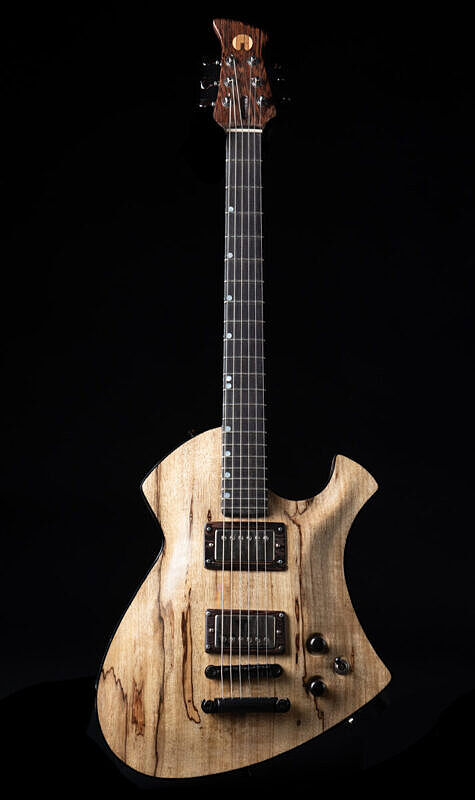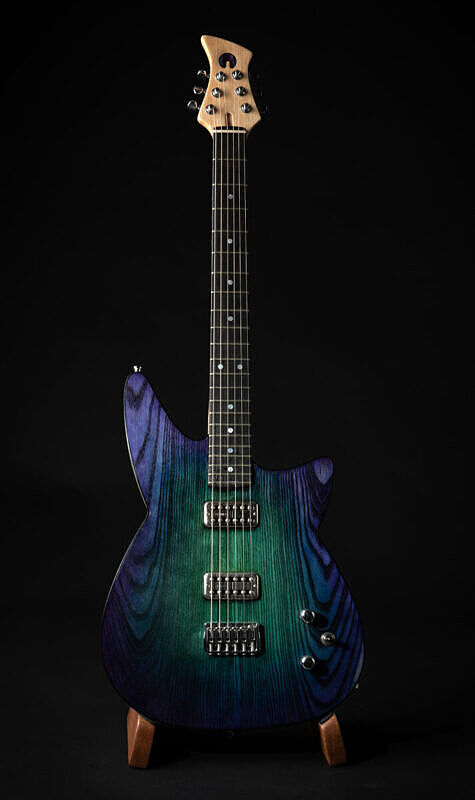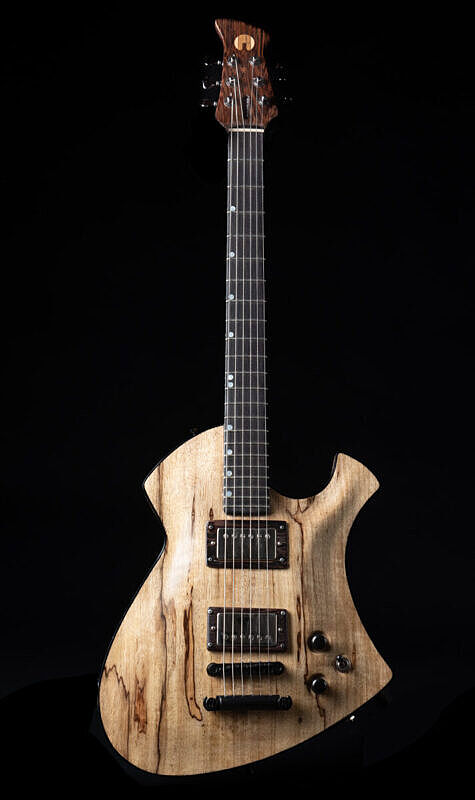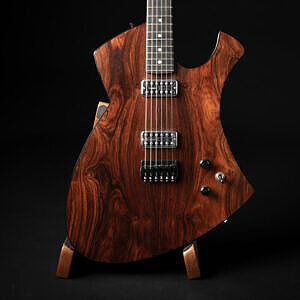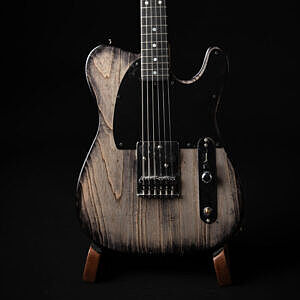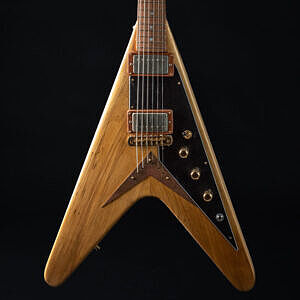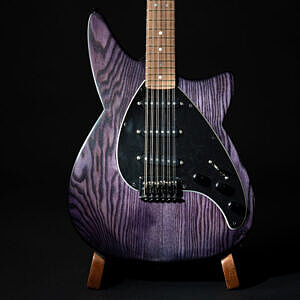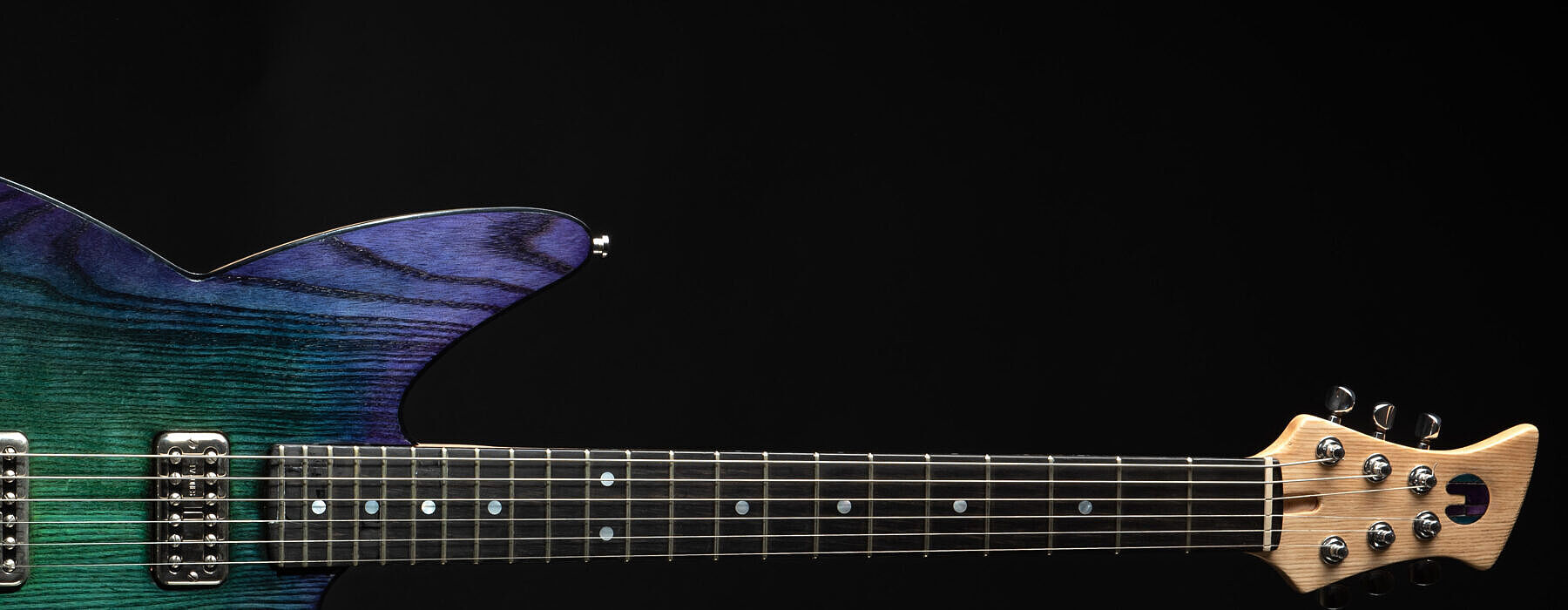
Custom Electric Guitars
Bringing Dreams to Life
The Electric Guitar: One of the most influential musical inventions of the 20th century.
Possum Hall Instruments can design and build you just about anything you may desire in an electric guitar: solid body or semi-hollow, flat or carve top, extended fret range, fretless, scale length, custom shapes.
- 6, 7, 8 strings
- Choice of scale length – 24″-28.5″
- Huge selection of fingerboard wood and neck wood combinations
- Custom shaping of the neck to YOUR preference
- Any pickup configuration/brand of your choice
- Fretted or fretless
Body Construction
Solid or Semi-Hollow Body
The electric guitar evolved directly from the acoustic guitar, an inherently hollow-bodied instrument with a large interior acoustic space to create resonance and assist in sonic projection. When the electric guitar hit the open market in the 1950’s, it ushered in a revolution in musical design – and music itself.
The rest is history. The electric guitar is arguably the single most influential musical instrument of the 20th century, reaching all corners of the world, and inserting itself into genres and traditions that previously had no historical analog, not to mention creating entire genres of music from scratch (metal, punk, djent, noise pop).
A few prominent manufacturers continued to offer electric guitars in a form that more matched their historical predecessors, and the semi-hollow body guitar has always maintained a prominent foot-hold in the music world but for the most part were considered fairly genre specific (blues, jazz). That has changed significantly in the past 20 years and semi-hollow guitars are becoming nearly as popular as their solid body siblings.
Although most of the sound from an electric guitar is determined by the pickups and electronic systems, the wood species, hardness, density, weight, and construction techniques play a big part of how the strings vibrate over time. A heavy instrument generally sports longer sustain, but will tend to have less sparkle and high end chime. Many semi-hollow body players use the light weight and interior air cavity as a way to create and control a musical feedback interaction with their amplifiers. Instrument design takes all these factors into account and explores the various possibilities to achieve a target instrument, turning a concept into musical reality.
Top and Body Woods
Wood Makes a Difference
When it comes to solid body designs, decorative top woods (which might be structurally unsuitable for an acoustic holly-body instrument) can be paired with a variety of body woods to tailor the sound of a guitar in subtle (and not so subtle) ways.
Although it is generally accepted that “most of the sound of an electric guitar comes from the pickups”, tone starts with a vibrating string coupled to carrier system, the body and neck assembly of a guitar. As the string is driven to action (plucking), the wood and the string talk back and forth, sharing and dissipating energy over time. The rate of energy exchange and dissipation radically affect the tone that is produced by the vibration of the string.
Combining various body woods and top woods, we can find particularly appealing pairings, both decorative and in tailoring the tone of the instrument. Purpleheart on Spanish cedar, sycamore on ash, limba on alder – each pairing has produced results that feel and sound different than each other. Creative luthiery embraces these explorations.
